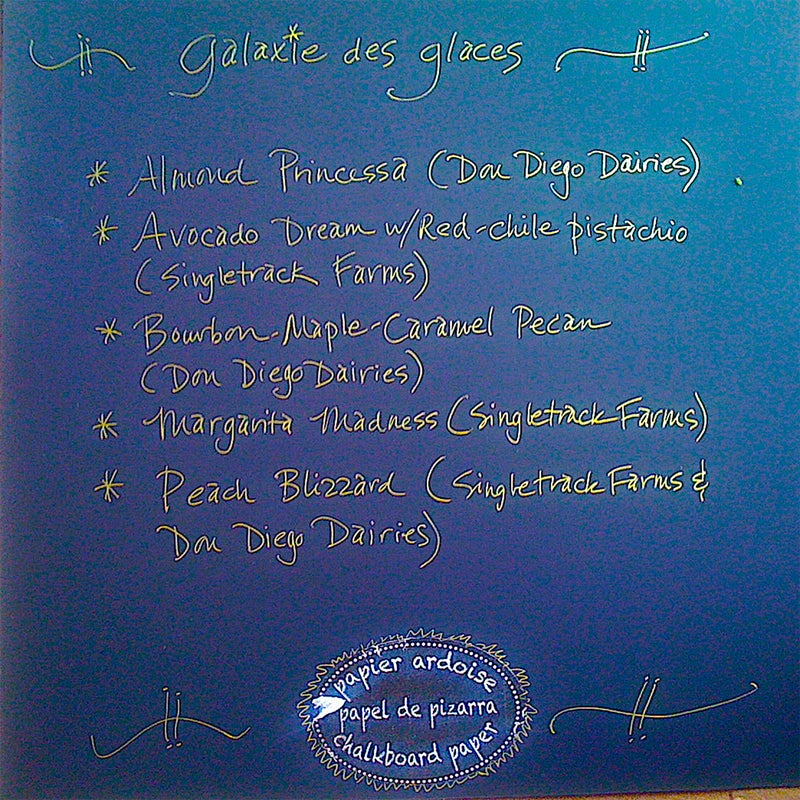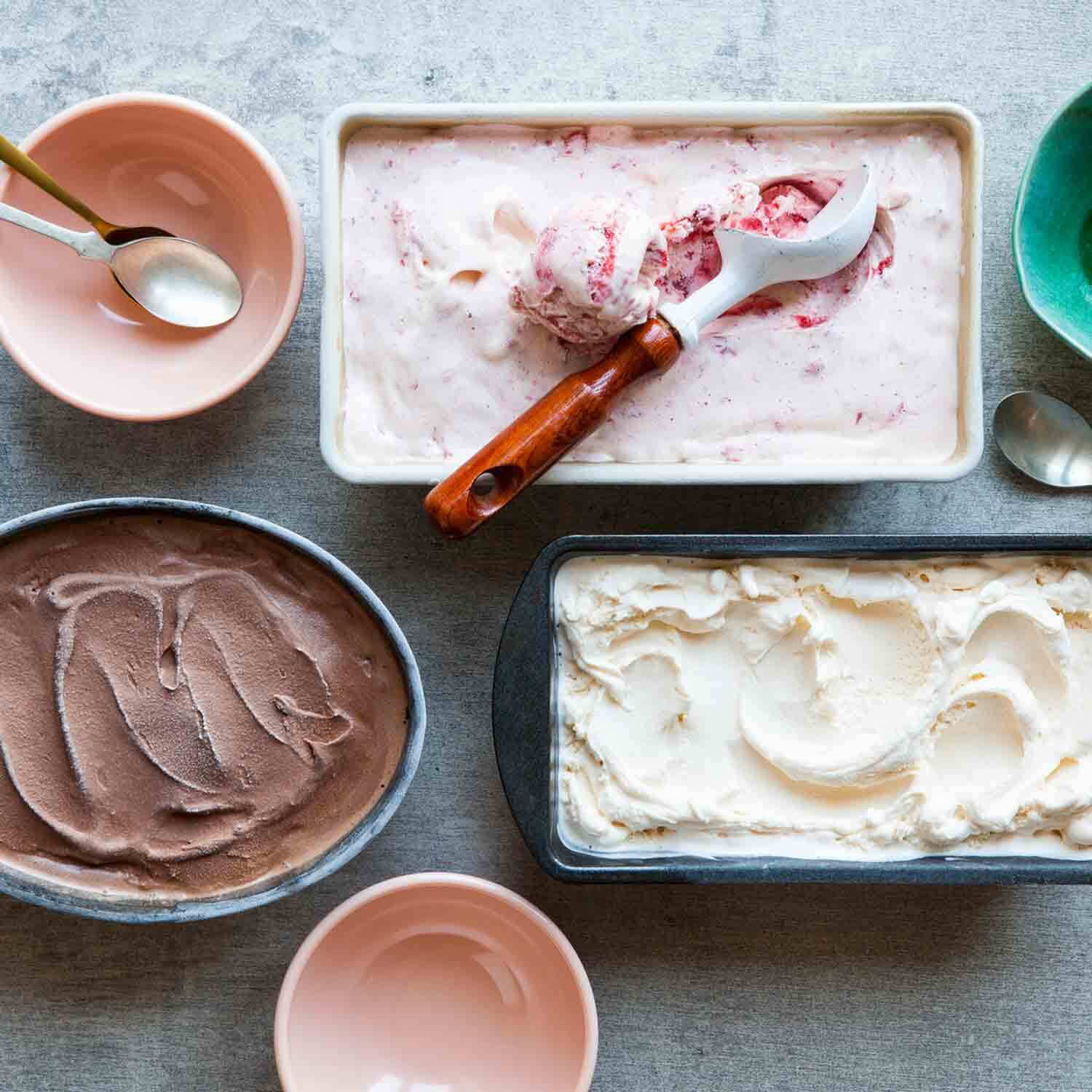In the famous Greek myth about Icarus and his father, Daedalus, Icarus is flying over the sea wearing wings that Daedalus, a master craftsman, made using feathers and wax. Ignoring dad’s warning, Icarus flies too close to the sun, and we all know what happens next: the wings melt, and he plunges into the water and drowns. This sad story is usually presented as a cautionary tale about hubris, but in Anne Sexton’s 1960 poem, “To a Friend Whose Work Has Come to Triumph,” she celebrates Icarus for his adventurous spirit, while chiding Daedalus for being a too careful bore.
Feel the fire at his neck and see how casually
he glances up and is caught, wondrously funneling
into that hot eye. Who cares that he fell back to the sea?
See him acclaiming the sun and come plunging down
while his sensible daddy goes straight into town.
Strange though it may seem, Sexton’s words perfectly describe a long-running feud between me and my friend Dave about the best way to make ice cream. Dave is a good cook, and he’s more creative than I am—he can invent something out of thin air and, defying all logic, it works. If I try that, I usually produce bubbling sludge, so my method goes more like this: I think of a dish I want to attempt (chicken pot pie, say), and then I look at a couple dozen recipes, mixing and matching ingredients until I arrive at a blend that’s good but also unique to me.
When it comes to ice cream, I’m more likely to make and modify tried-and-true favorites—maple-walnut, strawberry, peach—while Dave, Icarus-like, tests the boundaries of what is possible. In the past, he’s made red wine ice cream that was actually quite edible, along with unusual and yummy creations that contained green chile, red chile, and tequila. In the menu below, which was hand-lettered by my wife for an ice cream party Dave and I cohosted a few years ago, you can see the difference in styles. I’m Don Diego Dairies; he’s Singletrack Farms.

The ice cream debate between Dave and me will last forever, but we agree on one thing: DIY ice cream is well worth the effort—just ask the people who came to our party—and it’s a lot easier and cheaper to do than you’d think. As I discussed in my recent article on smoking chicken, I’m all about making good food in ways that are both simple and affordable. Let’s join hands and take a look at how DIY ice cream goes from dream to reality.
Create Your Base
Ice cream usually features some combination of dairy products, sugar, flavorings like vanilla, almond, and chocolate, and, in the recipe I use, eggs. Dave refuses to use eggs. I asked him to explain why, and he threw down hard in an email reply: “I make American ice cream—sometimes called —rather than or frozen custard. And why wouldn’t I? My forefathers didn’t fight at Lexington and Yorktown only to succumb to the capricious whims of Lafayette.”
Hmm. Lafayette was on our side during the Revolutionary War, so this rant might make more sense if Dave had name-checked the ��But never mind, because the point is clear enough: my friend’s Francophobia has driven him to make ice cream that comes out wayyy less rich and velvety and scrumptious than mine. It’s sad, but at least he gets to sound like Oliver Wendell Douglas giving a patriotic speech on Green Acres.
Recipes vary, but the French-style base I settled on (after a lot of trial and error) goes like this. Once you’ve made it, you can add additional things to produce any number of variations. And in case you’re wondering: you won’t taste the eggs.
Ingredients
- 2 eggs
- 1 cup sugar
- ¼ teaspoon salt
- 2½ cups heavy cream
- 2 cups half-and-half
- 1 vanilla bean or 1 teaspoon vanilla extract
Steps
In a heavy saucepan, combine everything but the vanilla. Heat the mix over a low flame, using an instant-read thermometer and whisking slowly but constantly, until the temperature reaches 160 degrees. (This makes the eggs safe to eat.) Remove from the heat, and add the vanilla. Cool in the fridge overnight.
I use fewer eggs than many recipes I’ve seen—they sometimes ask for six to eight!—but even so, you may be shocked by all the eggs and dairy and sugar that goes into a standard quart of vanilla. All I can say is: that’s ice cream, folks. Enjoy it without guilt, but maybe not every day.
Gear Up
The first time I experienced homemade ice cream was at a family reunion in Mississippi in the late 1960s. I was probably 10 or 11, and I was wandering around looking at tables loaded with the greatest of all lunch foods—fried chicken, ham, ribs, sausage, potato salad, deviled eggs, pimento cheese, and… did I say fried chicken already?—when I ran into a friendly man I didn’t know, because he wasn’t one of my many, many uncles or adult-size cousins. (My mom grew up in a farm family with 12 kids.) He was sitting in a folding chair and cranking an the kind that looks like a big wooden bucket with a metal handle on top.
If this man had explained how it worked, I wouldn’t have understood him, but here’s the gist: The bucket holds a metal canister that contains the dairy mix and a stirring and scraping device called a dasher, which keeps the mix moving and adds air as you crank away. The canister sits in a bath of ice and rock salt. The rock salt lowers the temperature of the ice-and-water bath to 27 degrees, which is the temperature at which cream can start to freeze. Without the salt, you’d just be pointlessly moving your mixture around at a temperature of 32 degrees until the ice melted and you had to give up and start sobbing.
At the reunion, I was fascinated by this gizmo, and I soon pitched in and did a long session of cranking, which was hard work. I didn’t mind. It was fun, and I wanted to share in the cheers that I figured would rain down when we were done.
Which is exactly what happened. The ice cream we produced was a bit soupy but delicious. Somebody suggested I put syrupy sliced yellow peaches on mine. I did. That made it even better.
You can still buy the hand-cranked buckets, but they also now come in models, and these days, there’s also the miracle of compressor ice cream makers that freeze the mixture using refrigerator technology. I’ve shied away from both because the old-fashioned machines are clunky and the sci-fi units are expensive. (This fancy is listed for up to $550!) Instead I use It’s affordable (usually around $60 or $70), you can store it in a pantry, and it works.
The key component is the bowl that you see under the clear plastic lid. It’s made of sturdy, double-walled metal, with an inner layer of liquid that is permanently sealed off. What’s inside isn’t plain water, but I don’t know what it is exactly: my owner’s manual just calls it “cooling liquid.”
You keep the bowl in a freezer when you’re not using it. When it’s time to make ice cream, you put the bowl on the base’s round platform, add a plastic dasher and your dairy mix, and flip the switch. In my model, the bowl moves around while the dasher remains stationary. The freezing process takes roughly 20 minutes. The ice cream you get will probably seem a little too soft, but that’s OK. Just store it in a freezer overnight and it will become thumpingly solid without being icy. You’ll want to let it sit out for five to ten minutes before scooping. And then—yum.
Collect and Invent Recipes
There are some excellent recipe books out there, but the one I’ve been hearing the most buzz about on the ice cream street is David Lebovitz’s The Perfect Scoop: Ice Creams, Sorbets, Granitas, and Sweet Accompaniments. Lebovitz knows vastly more about this subject than I do, and his contains a bunch of great ideas and wonderful concoctions, including a terrific variation on cookies and cream called
(While we’re at it, here’s one of Dave’s signature creations, margarita madness.)
Some of my personal faves include maple-walnut, lemon, coffee malted, cardamom-vanilla, , and one that I did make up out of thin air, almond paste swirl. Someday we’ll all be able to have normal dinner parties again. When that time arrives, please try this one on your friends, and let me know how it goes.


